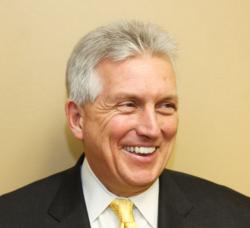Day: August 11, 2016
Leading is Transforming
Lessons from A Christmas Carol
Leadership and leader-follower relationships, are about transformation of people and organizations for the better. That clearly was the theme of A Christmas Carol. As a result of being led by spirits of Christmas past, present and future, Scrooge was transformed. These mentors led him through a series of purposeful and sometimes painful experiences that changed Scrooge’s life. Through their guidance He came to an understanding of his own selfishness and the needs of others around him. Eventually Scrooge chose to use his resources to transform the lives of others because he himself had been transformed.
Defining Transformational Leadership
James MacGregor Burns called this transformational leadership. Leaders recognize higher needs in followers (love, hope, meaning, esteem) and engage them fully by seeking to meet those needs and convert followers into leaders. According to Burns,
“transforming leadership raises the level of human conduct and ethical aspiration of both leader and the led. Leaders engage with others in such a way that leaders and followers raise one another to higher levels of motivation and morality.”
Though leader-follower relationships begin with transactions, they shouldn’t end there. As leaders earn credibility and trust through their transactions, they also gain more power to influence and elevate followers in transformational ways. According to Burns, moving followers, “to higher levels of motivation and morality,” is one of the primary evidences that leadership exists. It implies regard and respect for and commitment to followers.
Jesus as a Transformational Leader
Over more than 2,000 years, no leader has influenced more people or changed the world more profoundly for good than Jesus of Nazareth. In Jesus we have what is arguably the best example of a transformational leader. Witness His relationship with His disciples. Jesus understood they had both intrinsic value and very human needs. At their first encounter He engaged them in a transaction He initiated, filling their boat with fish. That clearly elevated His credibility. Jesus also made other promises to disciples; He delivered on those promises and His credibility grew. His genuine regard for followers was manifest in the many acts of love, kindness and service He extended to them.
Relational Dynamics are Key
These relational dynamics demonstrated His commitment and eventually transformed His disciples. Actually, His actions deepened their commitment both to Jesus and to the common purpose they shared with Him. By teaching, healing, challenging and loving these mostly uneducated and sometimes cowardly followers, Jesus transformed them into courageous and committed leaders. His mission and values became their mission and values. In fact, so powerful was the transformation that they boldly carried on the organizational mission in ways that cost most of them their lives.
Yet, the power to lead and transform didn’t come through any worldly position Jesus may have held. Instead it came through the relationships Jesus shared with them and the love, commitment, respect, sacrifice those followers experienced. It is a clear illustration that leadership is not a position; it’s a relationship with enormous potential to achieve and transform for the better. In our church growth consulting we encourage this type of leadership for pastors. While they may be tempted to wield power, would be leaders must recognize that transforming individuals and organizations requires them to understand and act on the needs and wants of followers. This approach shows them how to motivate church members. And when they do that they’ll be leading and helping to maximize church growth.

